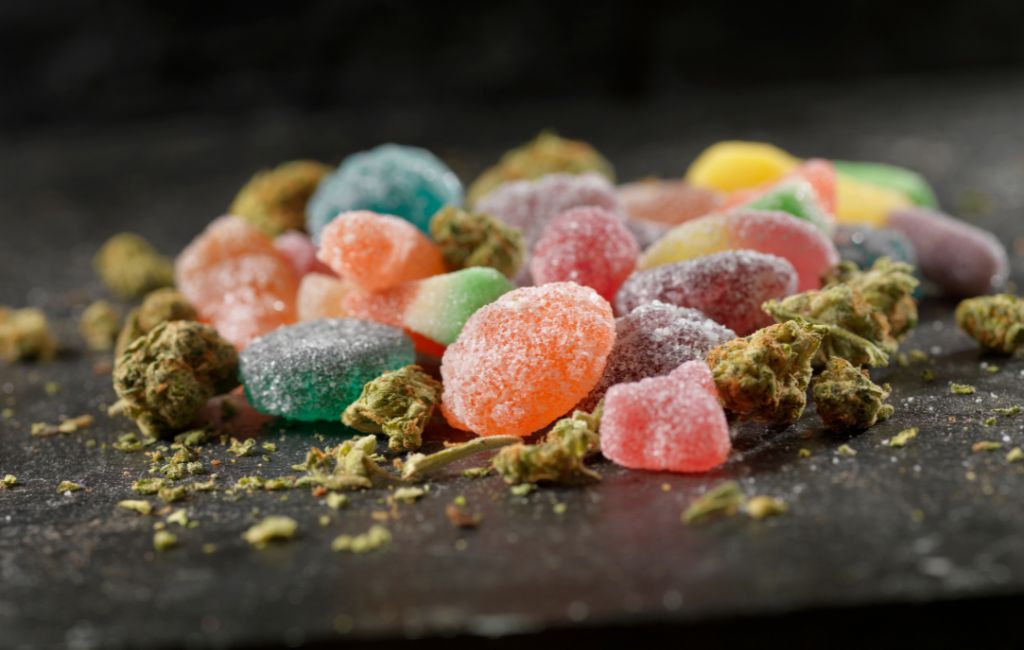Pineapple Gummy Treat: A Sweet Delight
Pineapple gummy treats have captured the hearts of candy enthusiasts worldwide. These chewy, sweet, and tangy delights offer a unique flavor profile that sets them apart from other gummy candies. This article explores the fascinating world of pineapple gummy treats, their history, production process, health benefits, and their place in the market.
The History of Gummy Candies
Gummy candies have a rich history that dates back to the early 20th century. The first gummy candy, the gummy bear, was created by Hans Riegel, a confectioner from Bonn, Germany, in 1922. Since then, the gummy candy market has expanded to include a wide variety of shapes, flavors, and textures, with pineapple gummies being a popular choice among consumers.
The Unique Flavor of Pineapple Gummies
Pineapple gummies stand out due to their distinct flavor. The combination of sweetness and acidity found in pineapples translates well into gummy form, providing a refreshing taste that appeals to both children and adults. This flavor is often enhanced with natural pineapple juice or flavoring to ensure an authentic taste experience.
Production Process
The production of pineapple gummy treats involves several steps:
- Mixing Ingredients: The process begins with mixing gelatin, sugar, corn syrup, and water to create a base.
- Flavoring and Coloring: Pineapple flavoring and yellow coloring are added to the mixture to achieve the desired taste and appearance.
- Molding: The mixture is poured into molds shaped like pineapples or other fun designs.
- Cooling and Setting: The gummies are cooled and allowed to set, forming their chewy texture.
- Packaging: Once set, the gummies are packaged for distribution.
Health Benefits and Considerations
While gummy candies are often seen as a treat, pineapple gummies can offer some surprising benefits:
- Vitamin C: Pineapple flavoring often includes vitamin C, an essential nutrient for immune health.
- Gelatin Benefits: Gelatin, a key ingredient, is known for its potential benefits for skin, hair, and joint health.
Despite these benefits, it’s important to consume pineapple gummies in moderation due to their sugar content.
Market Trends and Popularity
The gummy candy market has seen significant growth in recent years. According to a report by Grand View Research, the global gummy market size was valued at USD 16.28 billion in 2020 and is expected to grow at a compound annual growth rate (CAGR) of 12.6% from 2021 to 2028. Pineapple gummies contribute to this growth, driven by consumer demand for unique and exotic flavors.
Case Study: A Successful Pineapple Gummy Brand
One notable example of a successful pineapple gummy brand is Haribo, a leading gummy candy manufacturer. Haribo’s pineapple gummies have gained a loyal following due to their authentic flavor and high-quality ingredients. The brand’s commitment to innovation and quality has helped it maintain a strong presence in the competitive gummy market.
DIY Pineapple Gummies: A Fun Project
For those interested in making their own pineapple gummies at home, here’s a simple recipe:
- Ingredients: 1 cup pineapple juice, 2 tablespoons gelatin, 2 tablespoons honey, and a few drops of yellow food coloring.
- Instructions: Heat the pineapple juice and honey in a saucepan. Gradually add gelatin, stirring until dissolved. Add food coloring. Pour into molds and refrigerate until set.
This DIY project allows for customization of flavors and shapes, making it a fun activity for families.
Conclusion
Pineapple gummy treats offer a delightful combination of flavor and texture that appeals to a wide audience. From their historical roots to their modern-day popularity, these treats continue to captivate candy lovers around the globe. Whether enjoyed as a store-bought snack or a homemade creation, pineapple gummies provide a sweet escape into a world of tropical flavor.
